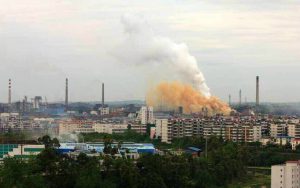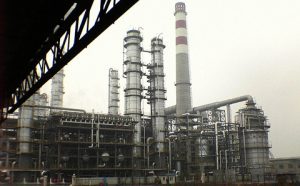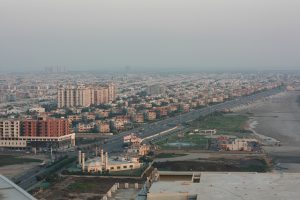Daily protests against a proposed relocation of a chemical plant in Shanghai reached a peak last week of 50,000, said to be the largest protest in China so far against production of paraxylene (PX), a compound used to manufacture polyester and plastic bottles.
Factories manufacturing the chemical in China are highly controversial due to safety fears.
Concerned residents started a sit-down protest at district government offices early last week, followed by marches at which demonstrators raised banners inscribed “PX Out” and “No to Gaoqiao, No to PX”.
Gaoqiao is the name of an area in Shanghai and also refers to the chemical plant in question.
With the current plant zone plagued by a series of accidents, the Shanghai government and Sinopec are alleged to have signed a deal to move production to the Shanghai Jinshan Industrial Park.
Rumours of a possible relocation sparked outrage in Jinshan.
“The Shanghai PX protests have set new records for ‘nimby’ campaigns in China,” said Guo Weiqing, a professor at Sun Yat-sen University’s School of Government and an expert on China’s ‘not in my backyard’ – campaigns and protests, told chinadialogue
Guo says these cases usually follow a certain pattern: public protests are quickly met with a government promise to halt the unwanted project, and protestors go home.
But the current protests in Shanghai have developed differently.
In spite of initial government denials of any such plans, the protests gradually intensified over ten days before coming to an end June 30 following a government pledge to halt the project.
Local opposition to the Gaoqiao chemical plant grew steadily, becoming more acute following an incident on May 13 in which one employee died and another was injured after inhaling nitrogen.
When claims began to circulate on Chinese social media that the Gaoqiao plant would be moved from Pudong to Jinshan, events came to a head over the recent Dragon Boat Festival holiday weekend.
Residents began posting online a steady stream of calls for street protests against the relocation and the original Gaoqiao PX facility.
The Shanghai government, in its initial June 22 response, said in a statement that no plans had been made for a PX plant in Jinshan’s Shanghai Chemical Industry Park. This was soon contradicted by a local government official who said the project was in the planning stage.
PX plants are the object of public opprobrium in China. The first PX protest was in 2007, when over ten thousand residents of Xiamen in Fujian province ‘went for a walk’ to oppose the construction of a large PX plant near a residential area. Similar protests took place in Dalian in 2011, Ningbo in 2012, and Maoming in 2013.
Governments and the chemical industry in recent years have launched a public relations effort to convince people PX manufacturing poses no public health or safety risks. Despite such efforts, high-profile incidents such as the 2013 and 2015 explosions at the Zhangzhou plant, relocated from Xiamen following the 2007 protest, have undermined efforts to sway public opinion.
In Shanghai, the announcement from the municipal government, published late on the evening of June 26 through an official Sina Weibo microblogging account, that environmental impact assessment for the relocated plant would stop, had the unintended result of making that night’s protest swell to an estimated size of 50,000 people.








